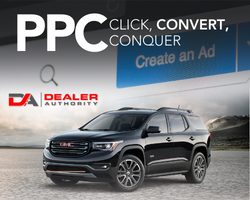Has the DEMO Drive changed?
On your very first day in car sales, a manager (or likely the put-upon salesperson) brought you out onto the lot and showed you how to give a proper vehicle presentation and demo drive. You were shown this once.
Over the years, customers have become far more researched on the vehicles they are interested in and many believe the basics of the product presentation have changed. Their knowledge allows us to be more concentrated on certain aspects of the vehicle than others. However, my question to you is, do you feel the demo drive has changed?
Most customers primarily show up to test drive first and ensure they are indeed interested in the vehicle that is best for them. Like trying on clothes, they want to check the fit, feel, finish, and comfort of the vehicle.
I know I’ve made some comedic videos about test drives gone wrong, but recognize that there are only a few different ways they can be conducted. What style works for some won’t work for others. There are four primary ways a test drive can be handled:
Test Drive #1:
You pull the vehicle up for the customer. The customer sits in the driver’s seat and you sit in the passenger seat, navigating them through the vicious 4-right turn track that you’ve created for yourself.
Conundrum #1: If you have given a proper presentation of the vehicle’s features before (or plan to after), how do you spend your time in the vehicle with them? Do you…
a) Just focus on their 5 senses (How does it feel? How is your field of vision? Are you comfortable? Do you smell that new car smell? Etc)
b) Do you focus on their need for the vehicle? What they are comparing it to and how they will be using it?
c) Do you re-highlight the features?
d) Do you build rapport with them and shoot the breeze?
e) Do you just shut up and let them experience it on their own?
Condundrum #2: If the customer has a spouse with them, do you…
a) Sit in the backseat and navigate from behind?
b) Sit in the front passenger seat so you can be a focal point for the second passenger?
Test Drive #2:
You pull the vehicle up, you drive the vehicle off the lot as your passenger and then perform the Chinese fire drill with a customer at an undisclosed place on the 4 right-turn track.
Conundrum #2: While this is a commonly taught practice, I ask, are you driving it off the lot…
a) For safety reasons?
b) So you can retain control of the experience?
c) Because with your expertise you can show them “what this thing can do” better than they might be willing to?
d) So they can experience the vehicle without having to focus on the traffic in front of them?
e) Because you are a control freak and you want all eyes on you?
Test Drive #3:
This form of test drive is rarely taught and often derided, but commonly executed. Many people feel the most effective form of test drive is to simply throw the customer the keys and let them take the vehicle out on their own. Do you find allowing the customer to test drive alone..
a) Allows them to experience the vehicle on their own without any pressure or anxiety?
b) Takes away your ability to build value or control the customer?
c) Is effective, especially for Internet managers, because it allows them to complete in-store tasks while the customer is away?
d) Makes you, the salesperson, appear more professional that you trust them to test drive it on their own?
e) Makes you, the salesperson, look lazy because you are unwilling to spend the time with the customer?
Those are the different styles of Test Drives and the Conundrums that follow each. This is an imperative step in the road to the sale and I’d love to hear what works for you. At one time or another, I’ve used all of these test drive forms, with differing degrees of success. At DealerKnows Consulting, we have a fairly specific process that works like a charm for Internet shoppers stopping in to test drive that we train our clients on, but we’d like to hear from you. (We hear ourselves talk enough).
We understand that every customer is different so I’m looking for people to take a stand on this rather than just respond with “You’ve gotta get a feel for ‘em” types of answers. We KNOW that 25% of so (random percentage) will only want to do things their way, but that leaves 75% (unproven percentage) willing to follow your instructions. How will you proceed?








